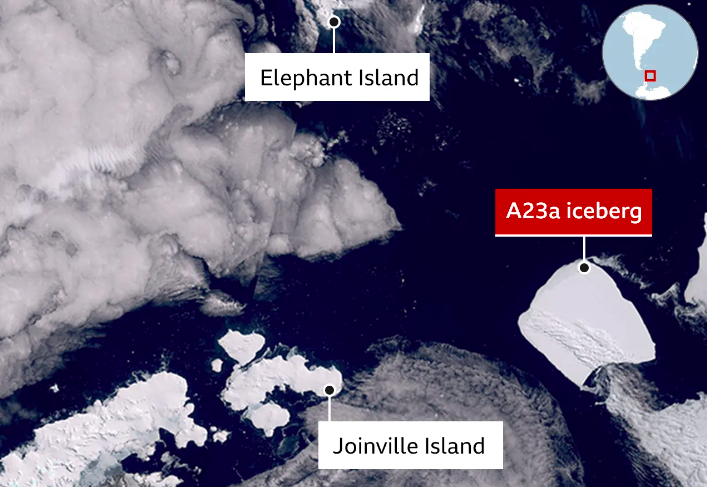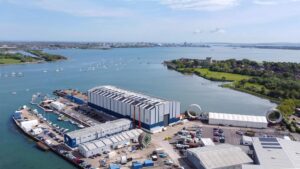World’s biggest iceberg is on the move after 30 years

After being stuck to the ocean floor, the world’s biggest iceberg — A23a — is on the move. It split from the Antarctic coastline in 1986 and grounded in the Weddell Sea where it’s remained until recently.
At almost 4,000 sq km (1,500 sq miles) in area, it’s more than twice the size of Greater London and 400m (1,312 ft) thick.
According to the BBC, the past year has seen it drifting at speed, and the berg is now about to spill beyond Antarctic waters.
A23a was part of a mass outbreak of bergs from the White Continent’s Filchner Ice Shelf. It first began to stir in 2020.
Dr Andrew Fleming says he was wondering if there was any possible change in shelf water temperatures that might have provoked the iceberg to move. “The consensus [among colleagues] is the time had just come,” says the expert from the British Antarctic Survey.
“It was grounded since 1986 but eventually it was going to decrease (in size) sufficiently to lose grip and start moving. I spotted first movement back in 2020.”
It’s now being driven by winds and currents, and is passing the northern tip of the Antarctic Peninsula.
Like most icebergs from the Weddell sector, A23a will almost certainly be ejected into the Antarctic Circumpolar Current, which will throw it towards the South Atlantic on a path that has become known as ‘iceberg alley’, says the BBC.
In March 2022, Endurance, the lost ship of Antarctic explorer Sir Ernest Shackleton, was found 107 years after it sank. The iceberg is now in the same movement of water — and accompanying westerlies — that Shackleton exploited in 1916 to make his escape from Antarctica.
“Over time, it’s probably just thinned slightly and got that little bit of extra buoyancy that’s allowed it to lift off the ocean floor and get pushed by ocean currents,” British Antarctic Survey glaciologist Oliver Marsh, tells Reuters.
“An iceberg of this scale has the potential to survive for quite a long time in the Southern Ocean, even though it’s much warmer, and it could make its way farther north up toward South Africa where it can disrupt shipping.”
It’s possible A23a could again become grounded at South Georgia island. That would pose a problem for Antarctica’s wildlife. Millions of seals, penguins, and seabirds breed on the island and forage in the surrounding waters.
In 2020, a reconnaissance mission flew over iceberg A68a, similarly expected to cause disruption (although it eventually broke into small chunks). The berg was the largest remaining section of A68, which calved off the Larsen C ice shelf on the Antarctic Peninsula in July 2017. Its sheer size meant it was impossible to capture in a single photograph.
In 2022, a Norwegian cruise ship cancelled its nine-night trip through Alaska, after the vessel crashed into an iceberg off the Alaskan coast. The incident happened near the Hubbard Glacier in Yakutat Bay.
Main image courtesy of Copernicus-sentinel 3, via the BBC.










